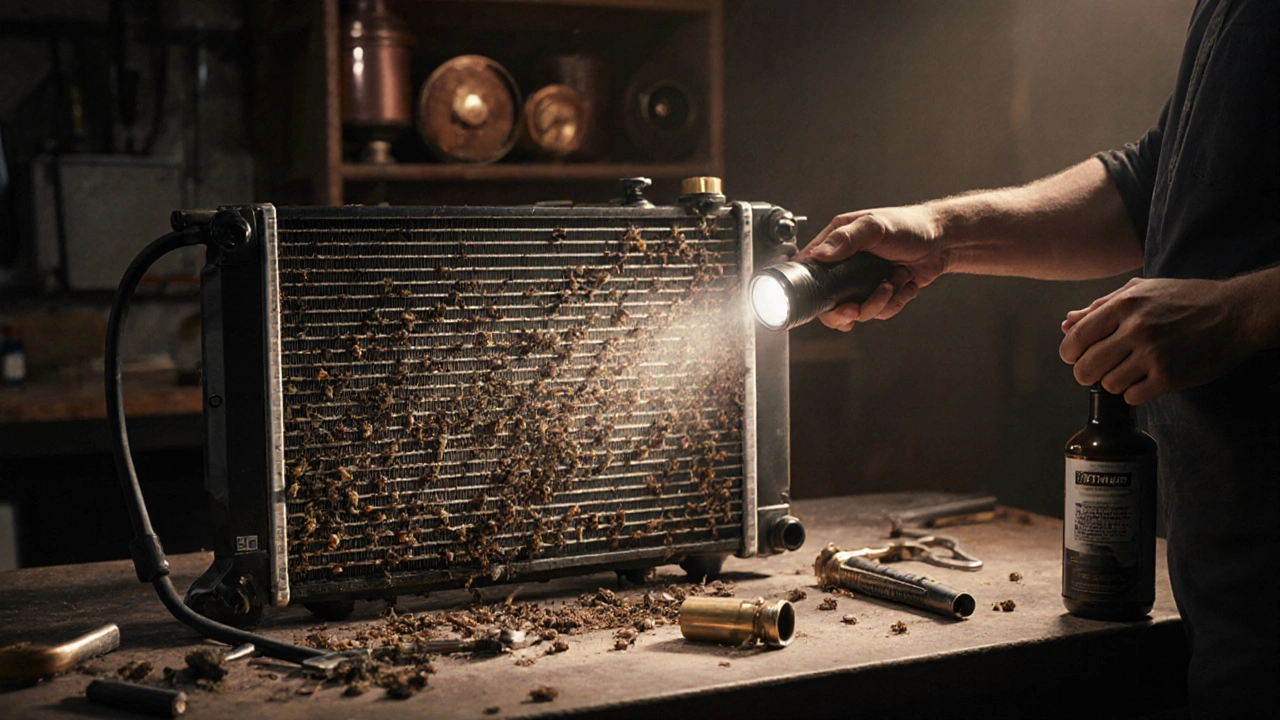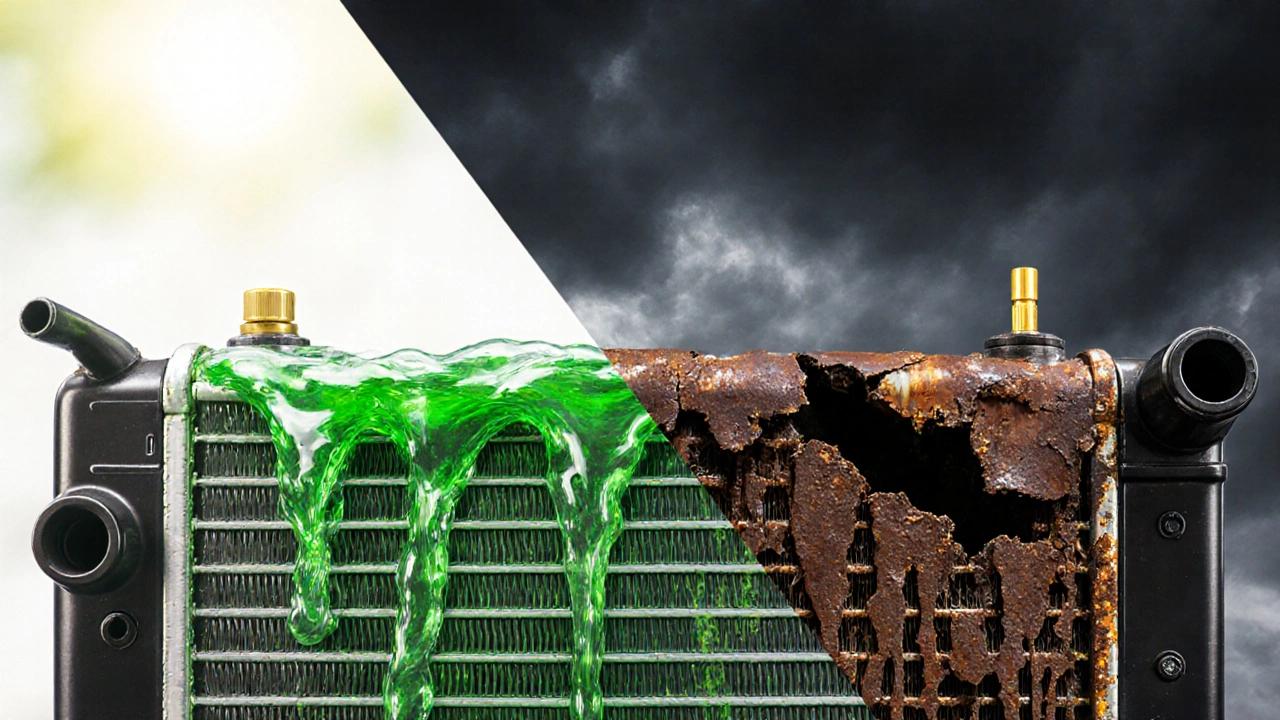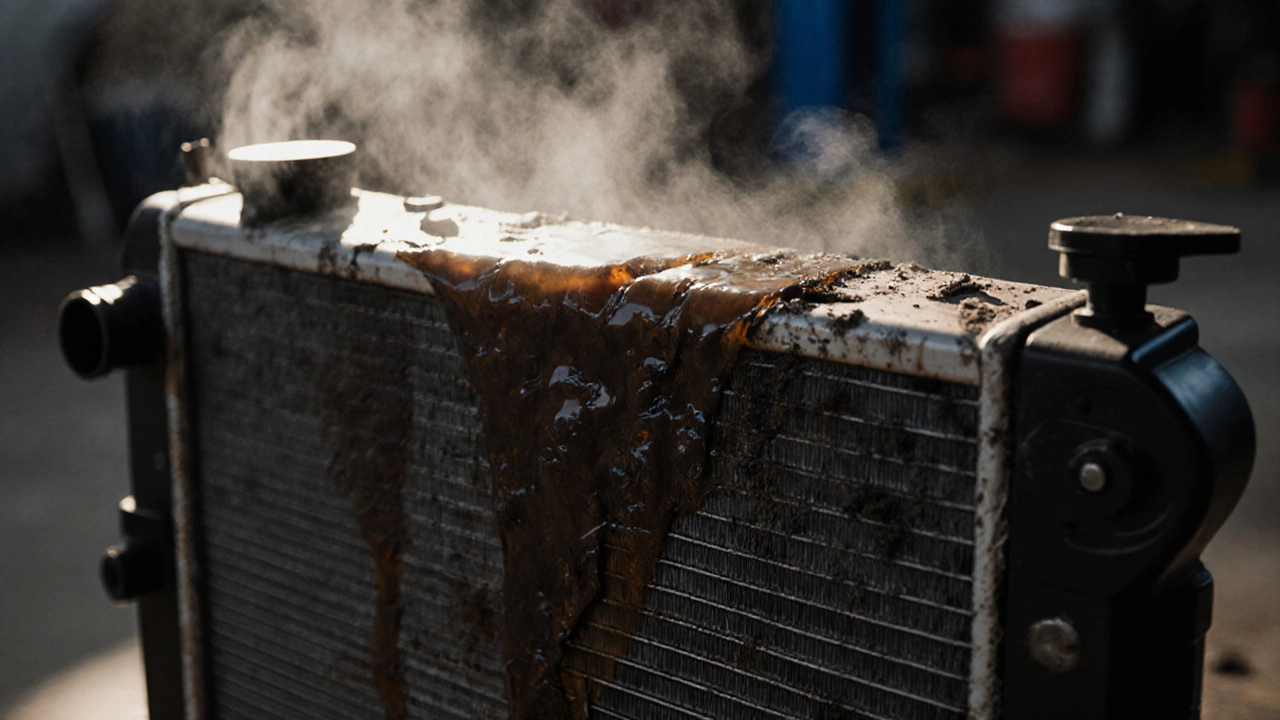Most people don’t think about their radiator until it fails. Then suddenly, steam is pouring out under the hood, the temperature gauge is in the red, and you’re stranded on the side of the road. The truth is, a radiator doesn’t last forever-but it doesn’t need to be replaced every few years either. Knowing how long a radiator typically lasts can save you money, avoid breakdowns, and keep your car running smoothly for longer.
How Long Does a Car Radiator Usually Last?
A well-maintained radiator can last anywhere from 8 to 15 years, or roughly 100,000 to 150,000 miles. That’s the average for most modern cars built after 2000. Some radiators, especially in well-cared-for vehicles, have been known to last 20 years or more. But that’s not the norm. Most drivers will need to replace their radiator at least once during the life of the car.
Older cars, especially those made before the 1990s, often had copper-and-brass radiators that were tougher and easier to repair. Modern radiators are mostly aluminum with plastic end tanks. They’re lighter and cheaper to make, but they’re also more prone to cracking, leaking, or corroding over time. So while the core might still be fine, the plastic parts can fail long before the metal does.
What Kills a Radiator Sooner?
It’s not age alone that kills radiators. It’s what happens inside them. Here are the top three killers:
- Contaminated coolant - If you never flush the coolant, rust, scale, and sludge build up inside the radiator. This clogs the tiny cooling passages, reduces efficiency, and causes overheating. Over time, that buildup eats away at the metal and plastic.
- Overheating - Every time your engine overheats, it puts massive stress on the radiator. Even one or two episodes can warp the core or crack the tanks. Once that happens, the radiator is done.
- Physical damage - Road debris, stones, or minor accidents can dent or puncture the radiator. A small hole might not leak right away, but it will get worse with vibration and temperature changes.
And don’t forget about the thermostat. A stuck thermostat can cause the engine to overheat, which then kills the radiator. It’s not the radiator’s fault-but it’s the one that pays the price.
Signs Your Radiator Is About to Fail
You don’t have to wait for steam to know your radiator is in trouble. Look for these warning signs:
- Low coolant levels - If you’re topping up coolant every few weeks, there’s a leak. Check under the car for puddles, and inspect the radiator for wet spots or crusty residue around seams.
- Discolored or sludgy coolant - Fresh coolant is bright green, orange, or red. If it looks brown, muddy, or has flakes in it, the system is contaminated. That’s a red flag for radiator damage.
- Overheating at idle or low speeds - If your car runs fine on the highway but overheats in traffic, the radiator isn’t moving enough air. Could be a failing fan, but it could also mean the radiator is clogged inside.
- Visible cracks or bulges - Look at the plastic end tanks. If they’re warped, swollen, or have hairline cracks, the radiator is done. No amount of sealant will fix this.
- Oil in the coolant or coolant in the oil - This isn’t a radiator issue-it’s a head gasket problem. But it can destroy a radiator fast. If you see milky sludge under the oil cap or in the coolant reservoir, get it checked immediately.

How to Make Your Radiator Last Longer
There’s no magic trick, but there are simple habits that extend radiator life by years:
- Flush and replace coolant every 30,000 to 50,000 miles - Follow your owner’s manual. Most manufacturers say every 5 years or 100,000 miles, but if you drive in stop-and-go traffic or hot climates, do it every 3 years. Use the correct coolant type for your car-mixing types can cause chemical reactions that damage the radiator.
- Check coolant levels monthly - Do it when the engine is cold. Top up with the right coolant if needed. Never use plain water unless it’s an emergency.
- Inspect the radiator hoses and clamps - Cracked, swollen, or brittle hoses can burst and dump coolant onto the radiator. Replace them every 4 to 5 years.
- Keep the radiator clean - Dirt, bugs, and leaves clog the front fins. Wash the radiator with a hose (not a pressure washer) once a year to clear debris.
- Don’t ignore overheating - If the temperature light comes on, pull over and turn off the engine. Let it cool. Don’t open the cap until it’s cold. Then get it checked.
Replacement Costs and What to Look For
When it’s time to replace the radiator, you’ve got options:
| Option | Cost (UK) | Lifespan | Best For |
|---|---|---|---|
| OEM (Original Equipment Manufacturer) | £250-£500 | 10-15+ years | Long-term reliability, warranty coverage |
| Aftermarket (quality brand) | £150-£300 | 7-12 years | Good value, decent warranty |
| Used or salvage yard | £50-£150 | 1-3 years (unpredictable) | Short-term fix, budget emergency |
Labour costs are usually £100-£200 depending on the car. Some models make radiator access easy. Others require removing the bumper, condenser, or even the engine mount. That’s why a quote can vary wildly.
Always go for a radiator with a warranty. A good one offers at least 2 years. If the shop won’t stand behind the part, walk away.

When to Replace vs. Repair
Can you fix a radiator instead of replacing it? Sometimes. Small leaks at the seams or around the filler neck can be sealed with a radiator stop-leak product-but only as a temporary fix. These products clog the cooling system over time and can damage your water pump or thermostat.
Cracks in the plastic end tanks? No repair will hold. Corroded core tubes? No way to fix them. If the radiator is leaking, discolored, or overheating despite a full coolant flush, replacement is the only smart choice.
There’s one exception: older cars with copper-and-brass radiators. These can often be professionally soldered or recored. It’s cheaper than a new radiator and lasts just as long. But that’s rare on modern vehicles.
What Happens If You Ignore a Failing Radiator?
Ignoring a bad radiator doesn’t just mean a breakdown. It can destroy your engine.
Overheating causes the cylinder head to warp. A warped head means the head gasket fails. A failed head gasket lets coolant into the cylinders, oil into the coolant, and combustion gases into the cooling system. Repairing that? It costs £2,000-£4,000. Replacing a radiator? £300-£700.
It’s not an exaggeration to say that a bad radiator can kill your engine. That’s why it’s one of the most important systems to monitor.
Final Advice: Plan Ahead
If your car is over 8 years old and has more than 80,000 miles, start paying attention. Don’t wait for steam. Check the coolant every few months. Look for leaks. Smell for sweet odours (that’s antifreeze). Listen for gurgling noises under the hood.
Replace the radiator before it fails-not after. It’s cheaper, less stressful, and keeps your car reliable. And if you’re planning to keep the car for another 5 years, a new radiator is one of the best investments you can make.
How long does a radiator last on average?
On average, a car radiator lasts between 8 and 15 years, or about 100,000 to 150,000 miles. With proper maintenance, some can last 20 years or more. But neglect, overheating, or contaminated coolant can cut that lifespan in half.
Can a radiator be repaired instead of replaced?
Small leaks can sometimes be sealed temporarily with stop-leak products, but this is not a permanent fix and can damage other parts of the cooling system. Cracks in plastic end tanks or corrosion in the core cannot be repaired reliably. For modern radiators, replacement is almost always the better choice.
What causes a radiator to fail?
The main causes are contaminated coolant, overheating, and physical damage. Rust and sludge build up inside the radiator and clog its tiny passages. Overheating warps or cracks the core. Road debris can puncture the tank or fins. Neglecting coolant changes is the #1 reason radiators fail early.
How often should I flush my radiator coolant?
Flush and replace coolant every 30,000 to 50,000 miles, or every 3 to 5 years, whichever comes first. If you drive in heavy traffic, hot climates, or tow heavy loads, do it every 2 to 3 years. Always use the coolant type specified in your owner’s manual.
Is it worth buying a used radiator?
Only as a last-resort temporary fix. Used radiators have unknown history-they may be clogged, cracked, or near failure. They rarely come with a warranty. A new aftermarket radiator costs only £150-£300 and comes with a 2-year guarantee. It’s a better investment.

